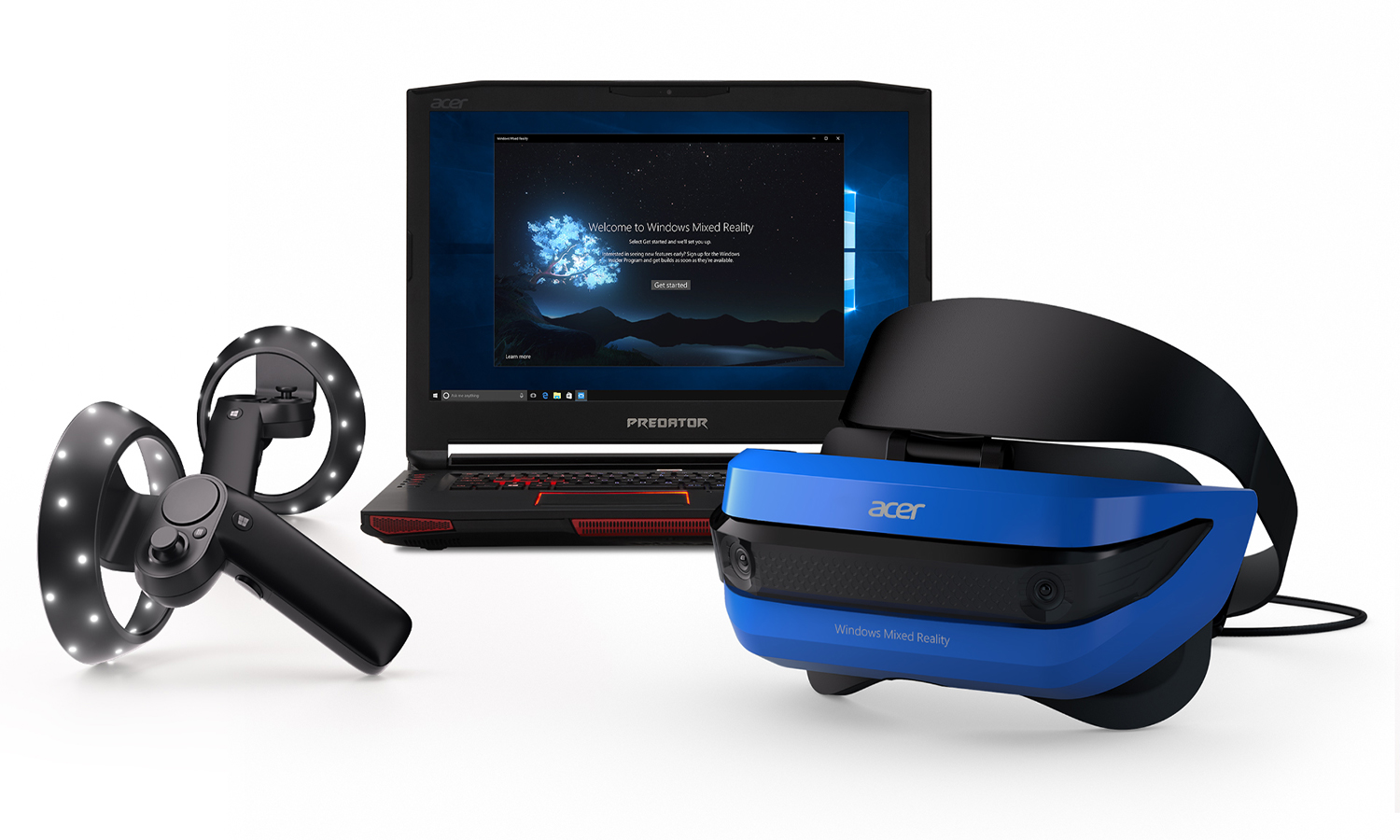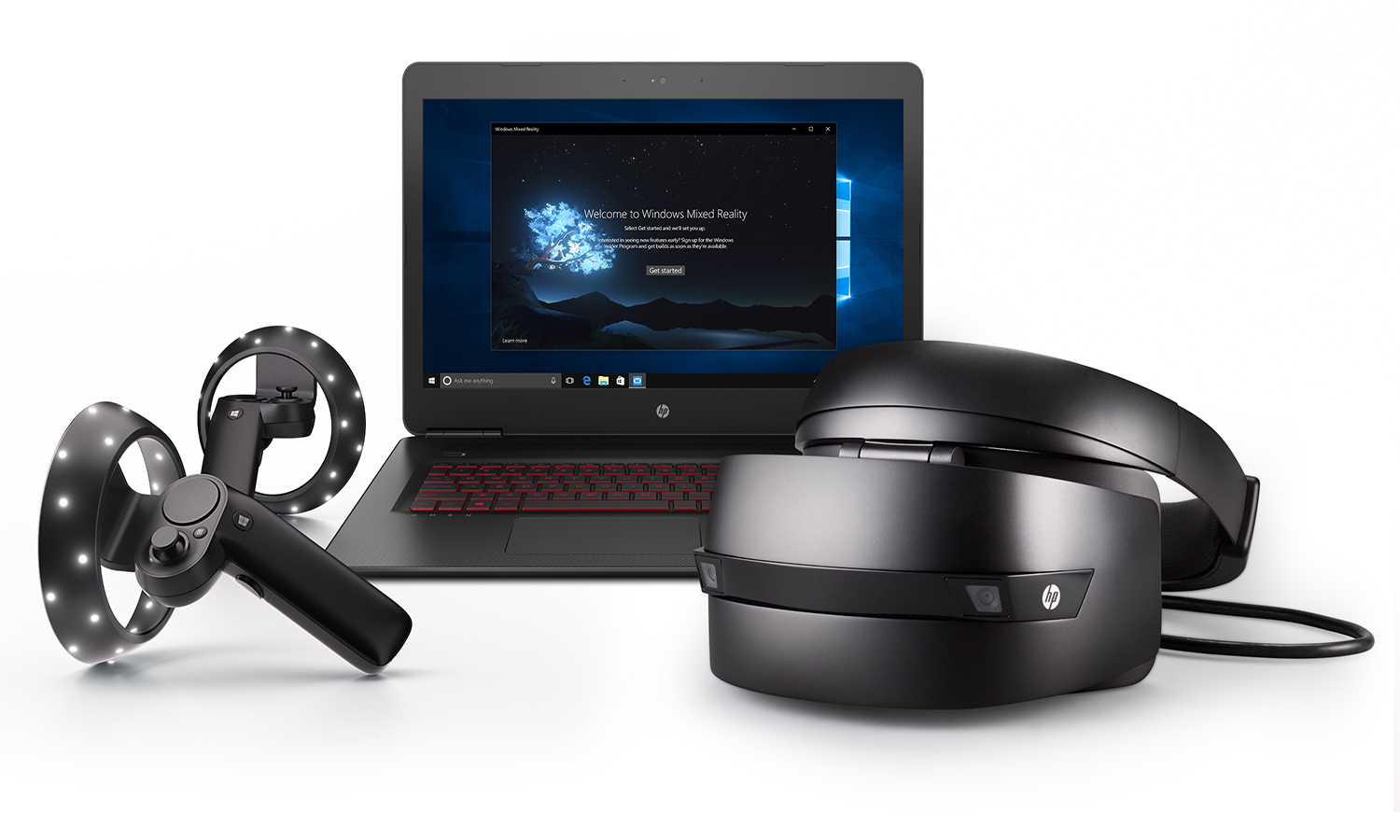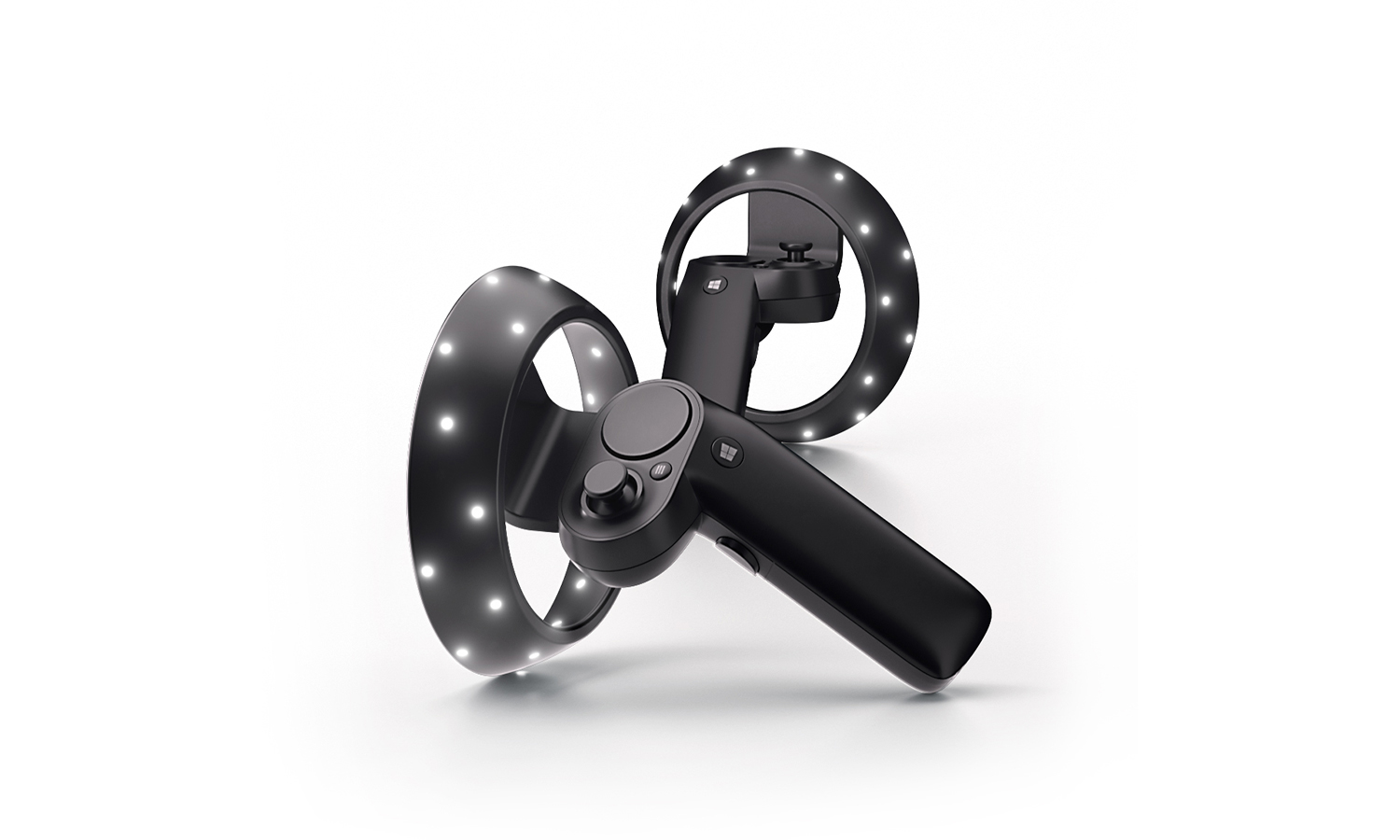Are Microsoft's Mixed Reality Headsets the Affordable Savior of VR?
Learning from the slow adoption of virtual reality, Microsoft is taking a smarter approach with its mixed reality headsets.
After numerous sneak peeks, Microsoft and its partners are finally getting ready to launch its new mixed-reality headsets and PCs later this year. Perhaps learning from the slow adoption of virtual reality, Microsoft is basing its MR platform on four basic tenets: easy usage, affordability, a range of options and immersive experiences.
Microsoft has also announced that it is working with 343 Industries to bring a Halo experience to its platform.

What is Mixed Reality?
But before we get into all that, what is mixed reality? Mixed or merged reality essentially combines virtual and augmented reality and creates a digital overlay onto the physical world. Using embedded positional head tracking software and spatial mapping technologies, the headset can create a seamless combination of the virtual and physical space.
To be clear, the actual entertainment experiences are all based in virtual reality, as we learned during a hands-on preview. Some of the titles we tried include the same types of games you'll find on other VR platforms, including the zombie shooter Arizona Sunshine and the fun and cute Rec Room, a game with a social component that lets you do things like look in a virtual mirror to choose your outfit before challenging a virtual friend to paintball.
MORE: Best VR Headsets
Affordability
Although Oculus Rift and HTC Vive both feature impressive, ground-breaking technology, each system debuted with prices that were anathema to even the most deep-pocketed consumer. However, the Vive now costs a more reasonable $599 (down from $799). The rift is even cheaper, costing just $399 during its summer sale.
Microsoft and its partners (Dell, Lenovo, Acer and HP) are committing to launching its headsets at $399 and the PCs needed to support them at $499. That means that you can get a mixed-reality setup, PC included, for a minimum $898. That's cheaper than the leading PC-powered VR headsets when you factor in a powerful gaming desktop or gaming laptop, as Microsoft's headsets will support PCs with integrated graphics.
Get instant access to breaking news, the hottest reviews, great deals and helpful tips.
Nevertheless, the price gap between the top-tier VR headsets and what Microsoft and its partners are cooking up has narrowed.
Ease of Use
While I'm a fan of both the Rift and Vive, setting up the devices can be a bit of a hassle, especially the Vive. Having to guesstimate where to place the base stations or sensors for proper tracking is tedious at best, frustrating at worst.
Microsoft's headsets seek to reduce the stress by placing the head-tracking systems into the headsets, eliminating the need for any external sensors. Now when you want to pop into a virtual or mixed-reality world, the process will be as simple as plugging the headset into your PC and placing it on your head.

This new plug-and-play solution also makes Microsoft's headsets much more portable than either the Vive or Rift. But if Microsoft wants a truly portable system, they'll have to find a way to cut the cord like the Samsung Gear VR and Google Daydream View.
The controllers we tried looked pretty weird, with lots of lights dotting the peripherals (for tracking). They were fairly light, and the buttons and triggers were all fairly easy to operate, but the small Windows/home button was difficult to find by feel.
MORE: Best VR-Ready Gaming PCs
Range of Options
As for the actual PCs, Microsoft has broken them down into two designations: Mixed-Reality PCs and Mixed-Reality Ultra PCs. Mixed Reality PCs consists of laptops with integrated graphics, which means that an ultraportable as slim as the HP Spectre x360 or Dell XPS 13 could power your MR headset.
Ultra PCs are notebooks and desktops equipped with discrete graphics, which should yield a smoother experience overall. Microsoft claims that Mixed-Reality PCs will run MR experience to the tune of 60 frames per second while Ultra PC will deliver 90 fps.
It's important to note that mixed-reality PCs with integrated graphics won't allow others to see what's on your screen as you play, while Ultra PCs will. In addition, you'll be able to multitask with only three open apps at a time.

Immersive Experiences (But How Many?)
I've said it before and I'll say it again, fancy hardware is nothing without compelling software. While we don't know how many exclusive apps and games Microsoft is planning to launch its MR platform with, it's a safe bet that it'll be nowhere near what Oculus already has in its library. But Microsoft has a plan. In addition to the MR-supported apps that will reside in the Windows 10 store, the headsets will also have the ability to play titles in the Steam store.
And to further pique gamer interest, Microsoft has announced that it's working with 343 Industries to bring a future Halo experience into VR/MR.
MORE: 25 Oculus Touch Games (You Should Be Playing)
Outlook: Mixed
Since the virtual reality revolution started, Microsoft has been biding its time, showing hints of what it had up its sleeve with Hololens. Now the company is looking to carve out its own niche in the market with its mixed-reality headsets. Learning from competitors, Microsoft is looking to avoid the missteps of others by making its technology reasonably priced, easy to use and compatible with a wider range of PC options. There should also be a sizable library at start.
And while that should be enough to get consumers to open up their hearts and wallets to mixed reality, it ultimately may not be enough. Oculus and Vive tried creating demo stations in big-box retailers like Best Buy and Gamestop to no avail. And while Microsoft has its own stores, there's still an intimidation factor and sheer geek factor that needs to be overcome with donning hardware like this.

Sherri L. Smith has been cranking out product reviews for Laptopmag.com since 2011. In that time, she's reviewed more than her share of laptops, tablets, smartphones and everything in between. The resident gamer and audio junkie, Sherri was previously a managing editor for Black Web 2.0 and contributed to BET.Com and Popgadget.
